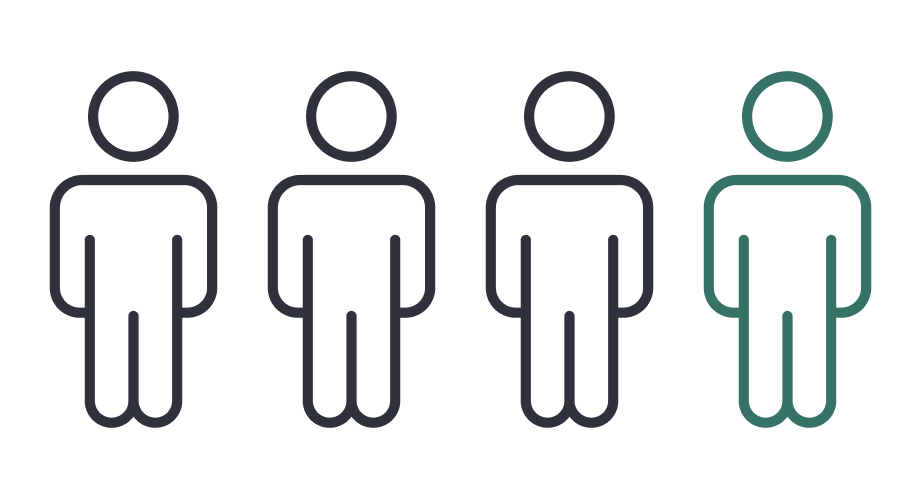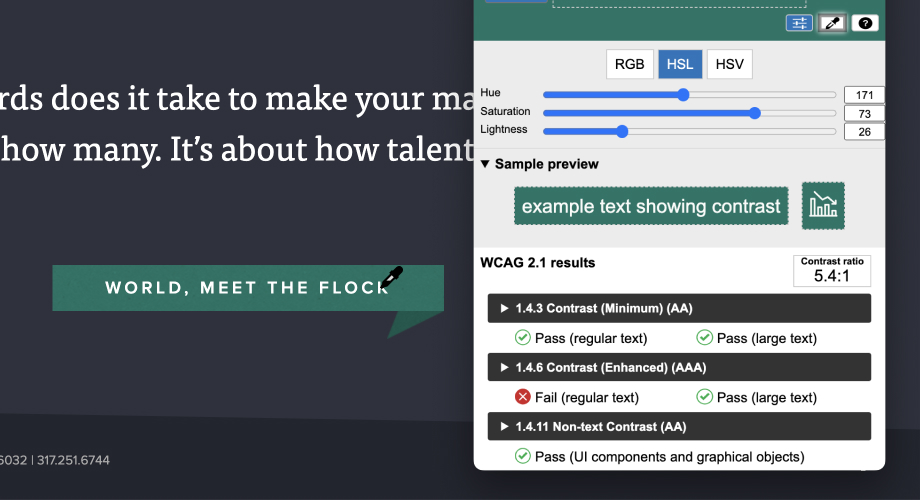Part One: The (Rare) Bird’s-Eye View
Audience awareness is essential to meaningful communication.
Who reads your website? What do readers already know about the topic, and what do they still need to know? Are they receptive to your message and approach, or should you…tread lightly?

Don’t overlook the diverse contexts in which readers engage your message. You’re already familiar with some of the accommodations companies routinely make now to address their audience’s changing needs and behaviors. Responsive design—making websites adaptable to best-viewing practices on screens of all sizes—is one clear example.
Companies that don’t adapt to shifting cultural expectations lose out to competitors who anticipate and better meet the needs of their potential audience.
Making websites accessible to everyone is not simply a matter of complying with the law, though that motivates many businesses. Nor is it a simple matter of doing the right thing, though that should be reason enough. Going all-in for full accessibility on your website is a smart business decision. Don’t think of it as a problem to avoid; think of it as a potential advantage in the marketplace.
Instead of assuming your audience is unburdened by specific challenges, the kinder (and smarter) approach is to embrace the decision to maximize your content’s reach and its level of engagement with readers, no matter their circumstances, by providing the adaptations necessary for your audience to engage your message.
Along with the strategic consideration of a website’s structure, these steps go a long way toward eradicating most legal concerns about accessibility and can drive a higher percentage of potential customers to, and through, your website.

According to the CDC, more than one in four American adults live with a disability. That’s more than 61 million potential customers in America alone whose method of engagement with your website should not be discounted or ignored. What business would casually discard one-fourth of its leads, prospects, or actual customers?
The ADA— the Americans with Disabilities Act—requires that every “place of public accommodation” provide equal access to users who meet ADA standards for disability. Unnecessary barriers to accessibility on websites have led to a number of prominent lawsuits. The list of companies that have been sued for not fully complying with the accessibility needs of their customers includes Nike, Netflix, Dominos, Amazon, Target, and many others. You don’t need to be a legal scholar to realize that there can be serious consequences to ignoring accessibility concerns.
Many of us only think about disability in terms of adaptations within a physical space, such as wheelchair ramps and grab rails. However, that is a limited (and wrong) assumption about what constitutes a disability. For the purposes of web accessibility, four types of disability are worth remembering: visual, hearing, motor, and cognitive.
While many disabilities are permanent, some are temporary—a person might only have a disability for a short period of time. For example, someone who suffers a stroke may lose full control of certain motor skills for weeks or months, and their cognitive abilities may need time to recover as well.
With temporary disabilities factored in, far more than 61 million Americans live with a disability at any time. If close to two billion people around the world now make online purchases, then choosing to ignore your website’s accessibility issues means willfully turning your back on more than 500 million potential customers.
In 1990, when the ADA became law, the World Wide Web wasn’t widely known, our youngest Rare Birds weren’t yet born (and the oldest had recently finished college), and only wealthy Americans owned a chunky cellular phone. No one knew how essential online interaction would become to daily life. Since then, however, this important law has been revised, and now all businesses are required to provide an accessible website experience for people with disabilities.
All businesses are required to provide an accessible website experience for people with disabilities. That includes your business.
The language of the ADA and related compliance guidelines have shifted the way we at Rare Bird approach our work. “It’s made me more thoughtful in the beginning stages of branding,” says Alysia Legler, one of Rare Bird’s designers. For the newly built and redesigned websites Rare Bird has brought into the world recently, compliance concerns were addressed from the outset. (If your website is more than 3-4 years old, it should be redesigned, anyway—for this and many other reasons.)

Addressing accessibility issues as part of a site redesign simplifies the process. “As I’m designing websites and picking brand colors,” Alysia adds, “I’m now taking that extra step to make sure the color palette is ADA compliant before the design is even created.”
In Part Two of “What We Talk About When We Talk About Web Accessibility,” we share a list of accessibility questions frequently asked by some of our clients so you can more thoroughly recognize the improvements your website may need.